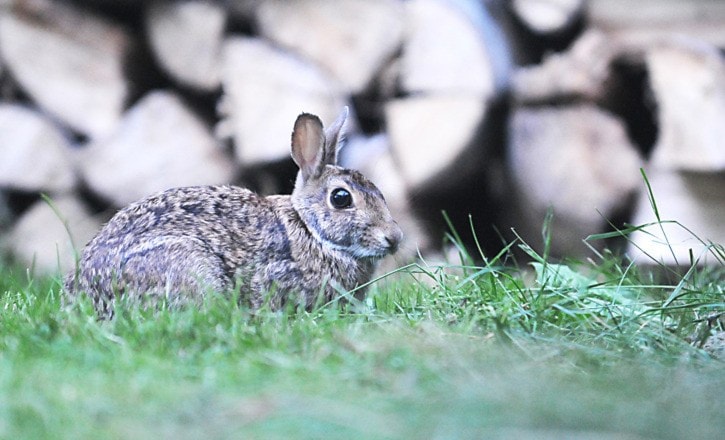Some residential areas of Langley are slowly being overrun by rabbits, but a wildlife advocate is calling on residents to resist using inhumane means to control them.
“Lethal means to eliminate wild rabbits are only quick fixes because they do not address the underlying cause of the problem which is the attraction factor in terms of food sources (foliage, flowers, and grasses) and shelter (bush piles, thickets),” said Dr. Patricia Tallman.
“As well, the poisons people may use invariably manifest in slow agonizing deaths of up to three days which is extremely cruel.”
A more long-term humane option is to consider non-lethal control measures, she suggested. Among them, erecting an exclusion fence with one-inch wire mesh buried one foot below ground and rising two to three feet above.
However, Tallman suggested, it might be more viable to simply protect specific plants and small areas rather than the entire yard.
Place empty soda bottles or milk cartons (with bottoms cut out) over seedlings for protection, or buy plant guards.
Protect trees with commercial tree tape or surround the base with wire mesh in a cylindrical fashion with a circumference large enough so that rabbits cannot lean up against the wire mesh and nibble on the plants.
For cases where it may not be cost effective to put up fencing, consider scare devices such as Mylar tape above locations of potential damage, or pinwheels at ground level.
For more than a year, Tallman has been lobbying the Township to create wildlife corridors and to retain sufficient relief habitats so that animals displaced by development are not killed by vehicles as they search for new habitat.
Tallman said that non-toxic repellent sprays can made by blending hot peppers in a blender, then adding water to create a liquid. Next, add one to two tablespoons of vegetable oil, with one to two drops of dishwashing liquid. Another safe non-toxic repellent is pureed garlic and water.
Also, planting plants that are rabbit-resistant is another measure. While individual rabbits have different tastes, the following in general are not well-liked: allium, anise, hyssop, astilbe, bee balm, daffodil, daylily, iris, lamb’s ears, lavender, peony, salvia, yarrow, oregano, thyme, mints, rosemary, sage, salal, germander, snapdragon, borage, calendula, lobelia, lupine, stock, marigold, heather, honeysuckle, columbine, butterfly weed, daisy, bellflower, black-eyed Susan, hardy geranium, euphorbia, bleeding heart, flax, lungwort, sedum and trillium.
As well, removing brush and rock piles, shrubs and thickets will reduce shelter provision for the rabbits.
“Most importantly, we must educate people that these creatures are not pests because they pose an inconvenience.” Tallman said.
Using lethal methods to address human-wildlife conflicts is cruel and short-sighted, she said, adding that poisons used in suburban settings pose a significant public safety health hazard not only to children, but also to domestic pets and other unintended wildlife.
“Human lethal intervention is usually the least effective as it upsets the natural balance of nature. “
